 Thanksgiving is a time when many non-profit organizations give thanks to their donors who support their mission with their time and money. Over the years, I’ve received Thanksgiving cards, thank-a-thon phone calls, and even a small little gift of gratitude from my favorite charities. However, the ALS #IceBucketChallenge has changed everything and set the bar higher for all resource development activities. So, I’ve spent days (if not weeks) thinking about how to use social media to steward donors during this time of the year. This morning I think I had my best idea yet. Let’s see what you think.
Thanksgiving is a time when many non-profit organizations give thanks to their donors who support their mission with their time and money. Over the years, I’ve received Thanksgiving cards, thank-a-thon phone calls, and even a small little gift of gratitude from my favorite charities. However, the ALS #IceBucketChallenge has changed everything and set the bar higher for all resource development activities. So, I’ve spent days (if not weeks) thinking about how to use social media to steward donors during this time of the year. This morning I think I had my best idea yet. Let’s see what you think.
Let me first set the scene . . .
It is Thanksgiving Day and I’m sitting around my parent’s table with my siblings and their children. There is turkey, stuffing, green bean casserole, and more food than you can imagine. The table conversation is thick with things for which we are all thankful:
- Mom is thankful for perfect children
- Dad is thankful that Mom is happy
- My sister is thankful that her kids are now all in school full-time
- My brother is thankful that his second hip replacement surgery was successful
 AND THEN IT HAPPENS . . .
AND THEN IT HAPPENS . . .
My teenage nephew whips out his smart phone and turns his video recorder on me. I unexpectedly stand up, grab the gravy boat, dump it over my head, and tell everyone why I’m so thankful for my favorite charity and all of my friends who I’ve solicited in the last year to support that agency. I end my testimonial by challenging by name my friends and family to take the #GravyBoatStewardshipChallenge. The video is posted to Facebook, goes viral and a new ePhilanthropy trend sweeps the nation, and this time it isn’t a solicitation phenomenon. It is instead focused on the ever-important stewardship function of your resource development program.
So, whatcha think?
Yeah, yeah, yeah . . . the gravy sounds hot and sticky and not as fun as ice water. OK, you’re probably right. I should go back to the drawing board and get a little more sleep tonight. (And to those of you who think I’ve lost my mind, let me assure you that my tongue is firmly planted in my cheek and I’m just trying to be funny.)
Even though my brainstorming might have come up a little short, this shouldn’t stop your organization from looking at social media as a stewardship opportunity this Thanksgiving season. Here are just a few other (and less sticky) ideas on how to use social media to give thanks to your donors:
- Record short video snippets of staff, board and clients giving thanks for what your agency has accomplished in 2014 and express gratitude to the donors whose support made it all possible. Then post it to Facebook.
- Twitpic a picture of something awesome happening at your agency and give it a stewardship caption.
- Start work on a digital version of your annual report that you will upload to your website.
- Create a YouTube video version of your annual report and send it to donors.
- Commit to writing a monthly feature story focused on your biggest supporters, upload to your website and point all of your social media friends to where it is located online.
 If there is one thing all of us should’ve learned from the ALS #IceBucketChallenge, it is that social media is a powerful tool in our resource development toolbox. While we’re all still learning how to use this tool, those who innovate and try new things will surely reap the rewards.
If there is one thing all of us should’ve learned from the ALS #IceBucketChallenge, it is that social media is a powerful tool in our resource development toolbox. While we’re all still learning how to use this tool, those who innovate and try new things will surely reap the rewards.
So, why not use social media this Thanksgiving season to steward your donors? Are you already doing something? If so, what is it? Do you have a crazy idea, but are too afraid to try it? What is it? We can all learn and support each other. Please scroll down and share your thoughts and ideas in the comment box below.
Here’s to your health!
Erik Anderson
Founder & President, The Healthy Non-Profit LLC
www.thehealthynonprofit.com
erik@thehealthynonprofit.com
http://twitter.com/#!/eanderson847
http://www.facebook.com/eanderson847
http://www.linkedin.com/in/erikanderson847
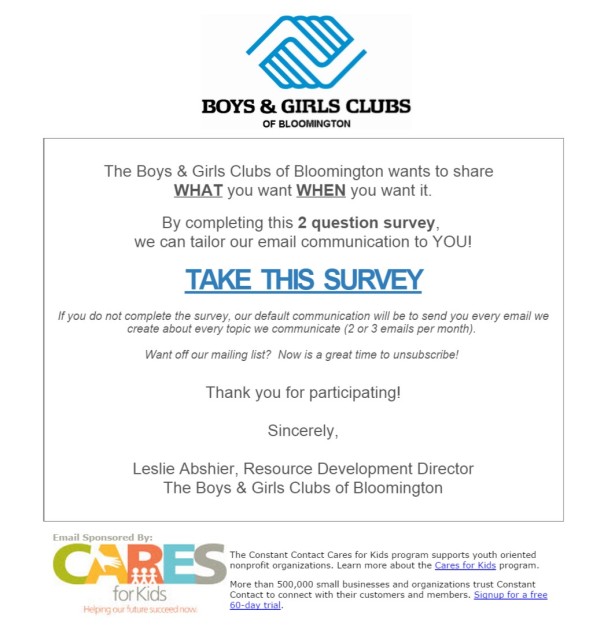


 I’ve had a recurring thought for the last two weeks because I keep running across beautiful donor recognition walls at non-profit organizations. Just yesterday I came across a donor recognition board in the lobby of the Knight Nonprofit Center on the Gulf Coast in Mississippi, and it was titled the “Mural of Generosity“. I just love the sound of that. Don’t you?
I’ve had a recurring thought for the last two weeks because I keep running across beautiful donor recognition walls at non-profit organizations. Just yesterday I came across a donor recognition board in the lobby of the Knight Nonprofit Center on the Gulf Coast in Mississippi, and it was titled the “Mural of Generosity“. I just love the sound of that. Don’t you?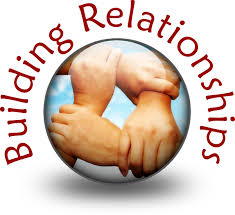 Last week I had the privilege of soliciting someone for an annual campaign pledge over a cup of coffee. In addition to securing their pledge, this was a nice opportunity to catch up because we hadn’t seen each other in a few years. As I neared the bottom of my cup of coffee, this donor reminded me of something important concerning most non-profit organization’s annual campaign efforts and donor loyalty rates.
Last week I had the privilege of soliciting someone for an annual campaign pledge over a cup of coffee. In addition to securing their pledge, this was a nice opportunity to catch up because we hadn’t seen each other in a few years. As I neared the bottom of my cup of coffee, this donor reminded me of something important concerning most non-profit organization’s annual campaign efforts and donor loyalty rates. A few days ago, I was Skyping with Henry Freeman, the owner of
A few days ago, I was Skyping with Henry Freeman, the owner of 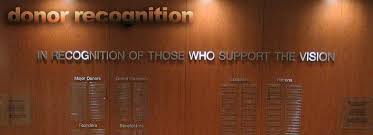 I believe that sometimes the universe speaks to you, and over the last two days I’ve been beat over the head with reminders that your non-profit organization’s donor recognition must be meaningful. While there is a time and place for computer generated gift acknowledgement letters and donor gifts, you need to know your donor and appreciate them in a way that speaks to their inner philanthropic soul.
I believe that sometimes the universe speaks to you, and over the last two days I’ve been beat over the head with reminders that your non-profit organization’s donor recognition must be meaningful. While there is a time and place for computer generated gift acknowledgement letters and donor gifts, you need to know your donor and appreciate them in a way that speaks to their inner philanthropic soul. To sum up the results of yesterday’s discussion, the volunteers decided that donor recognition and gifts should be personal, mission-focused and meaningful.
To sum up the results of yesterday’s discussion, the volunteers decided that donor recognition and gifts should be personal, mission-focused and meaningful. On Saturday, I attended the funeral of my father’s aunt —
On Saturday, I attended the funeral of my father’s aunt —  He first started looking for people who had once been loyal supporters but for whatever reason stopped donating. Then he found mutual friends (e.g. board members, former board members, volunteers, donors, etc) and asked them to assist with a re-introduction. On a go-forward basis he simply engaged in relationship building.
He first started looking for people who had once been loyal supporters but for whatever reason stopped donating. Then he found mutual friends (e.g. board members, former board members, volunteers, donors, etc) and asked them to assist with a re-introduction. On a go-forward basis he simply engaged in relationship building.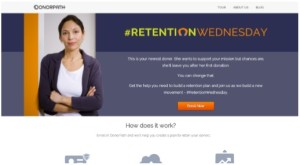
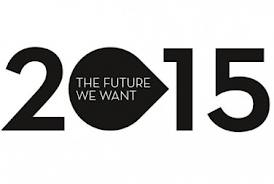 So, I guess I’m feeling a little bah-humbug about the entire idea of #RetentionWednesday. If I were king for a day (a scary thought), I would decree 2015 “The Year of Retention“.
So, I guess I’m feeling a little bah-humbug about the entire idea of #RetentionWednesday. If I were king for a day (a scary thought), I would decree 2015 “The Year of Retention“. Thanksgiving is a time when many non-profit organizations give thanks to their donors who support their mission with their time and money. Over the years, I’ve received Thanksgiving cards, thank-a-thon phone calls, and even a small little gift of gratitude from my favorite charities. However, the ALS #IceBucketChallenge has changed everything and set the bar higher for all resource development activities. So, I’ve spent days (if not weeks) thinking about how to use social media to steward donors during this time of the year. This morning I think I had my best idea yet. Let’s see what you think.
Thanksgiving is a time when many non-profit organizations give thanks to their donors who support their mission with their time and money. Over the years, I’ve received Thanksgiving cards, thank-a-thon phone calls, and even a small little gift of gratitude from my favorite charities. However, the ALS #IceBucketChallenge has changed everything and set the bar higher for all resource development activities. So, I’ve spent days (if not weeks) thinking about how to use social media to steward donors during this time of the year. This morning I think I had my best idea yet. Let’s see what you think. AND THEN IT HAPPENS . . .
AND THEN IT HAPPENS . . . If there is one thing all of us should’ve learned from the ALS #IceBucketChallenge, it is that social media is a powerful tool in our resource development toolbox. While we’re all still learning how to use this tool, those who innovate and try new things will surely reap the rewards.
If there is one thing all of us should’ve learned from the ALS #IceBucketChallenge, it is that social media is a powerful tool in our resource development toolbox. While we’re all still learning how to use this tool, those who innovate and try new things will surely reap the rewards. A few weeks ago I facilitated a training session titled “2014 Finish Strong: Year-End Strategies” for a group of non-profit professionals in New Mexico. Long story short . . . there were LOTS of things that non-profits try to do in the fourth quarter. Participants shared with each other what they were doing back home at their agency and we collectively talked about best practices.
A few weeks ago I facilitated a training session titled “2014 Finish Strong: Year-End Strategies” for a group of non-profit professionals in New Mexico. Long story short . . . there were LOTS of things that non-profits try to do in the fourth quarter. Participants shared with each other what they were doing back home at their agency and we collectively talked about best practices.